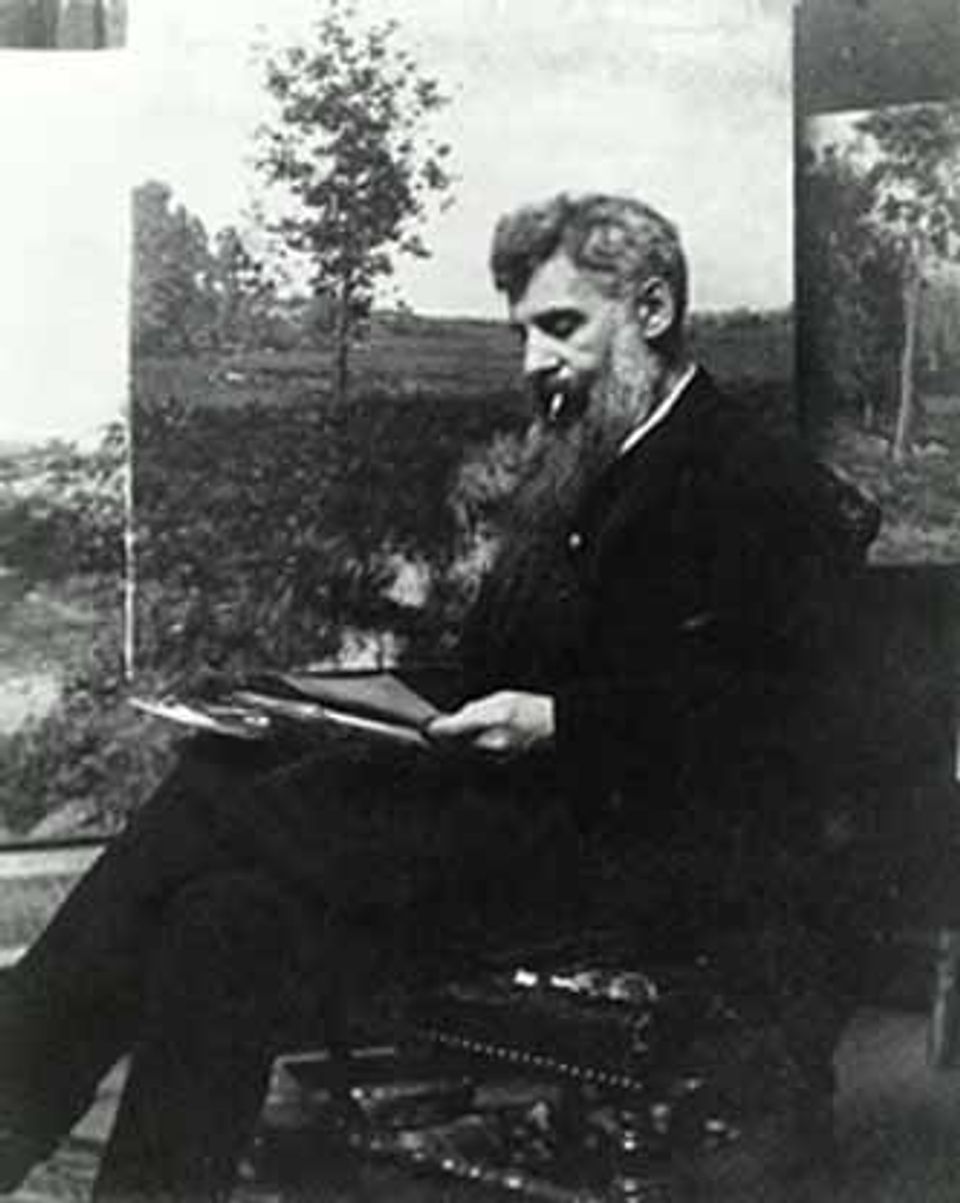Artist Biography
Raised in Defiance, Ohio, Alexander H. Wyant worked during his teens as a sign painter in nearby Port Washington. In 1857 he was impressed with some paintings by George Inness at an exhibition in Cincinnati and soon left for New York to meet Inness. After returning to Cincinnati, Wyant secured the support of Nicholas Longworth and went to study in New York in 1860. After an interlude of two years in Cincinnati, he moved back to New York City in 1863. He exhibited for the first time at the National Academy of Design in 1864 and was elected an associate there in 1868 and an academician in 1869. Wyant went abroad in 1865, studying for a few months with the Norwegian painter Hans Frederik Gude at Karlsruhe, and making brief stops in England and Ireland before settling again in New York. From 1867 he exhibited his watercolors almost annually and was instrumental in the founding of the American Water Color Society in 1878.
A partial stroke while on a government expedition to Arizona and New Mexico in 1873 led to paralysis of his right arm. Between 1864 and 1880 he worked in his studio in New York City, teaching himself to paint with his left hand. After his marriage in 1880, he began to spend most of his time in Keene Valley, New York. He moved in 1889 to Arkville, New York (in the Catskills), occasionally revisiting his New York City studio.
Wyant's signature style was developed slowly and not without several false starts along the way. Special contributions came from his initial contact with Inness shortly after that artist's sojourn in France; the startling revelations disclosed to Wyant by his study of Constable and Rousseau; and his stroke in 1873, which accelerated the artist's movement away from the sort of detailed examination of natural facts that one finds, for example, in his well-known Mohawk Valley [the Metropolitan Museum of Art]. After 1866 Wyant gradually shifted toward a more fluid handling of paint, with increasing reliance on a palette emphasizing shades of white, gray, and the earth colors. In his later years Wyant's solitary, introspective mood came to blend more closely than ever with his landscapes, especially those from the Arkville area, where a kindred spirit, J. F. Murphy, also worked.
Peter Bermingham American Art in the Barbizon Mood (Washington, D.C.: National Collection of Fine Arts and Smithsonian Institution Press, 1975)














